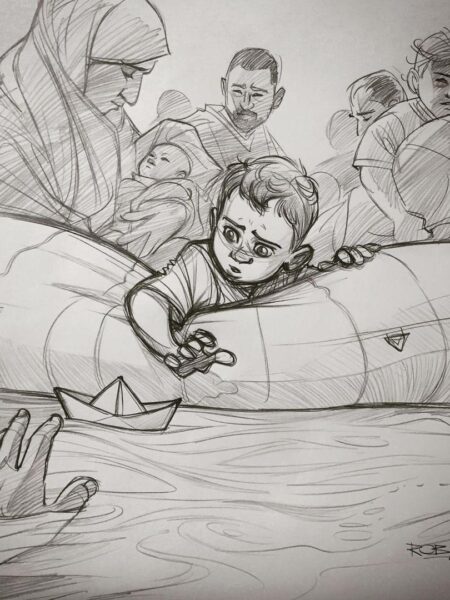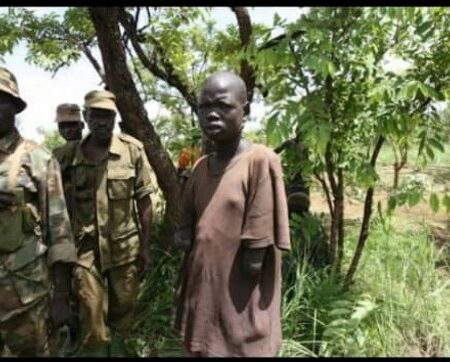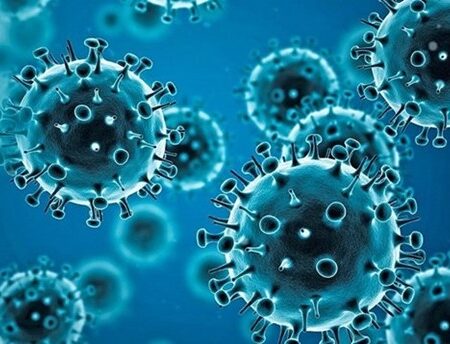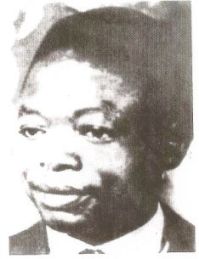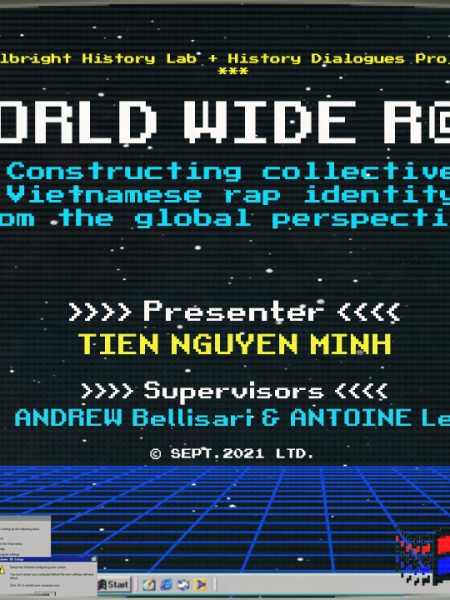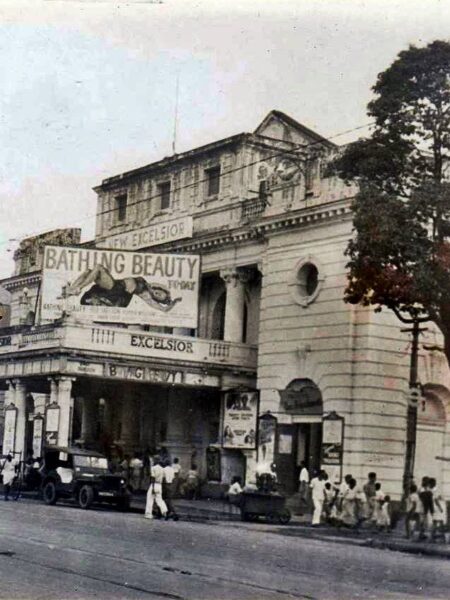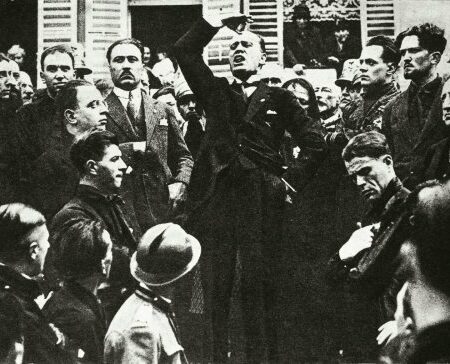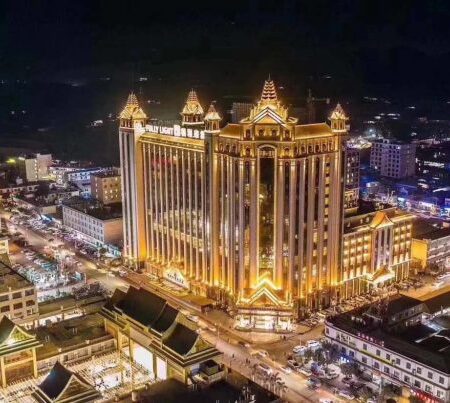1. INTRODUCTION
Since the end of the 18th century, nationalism has been the ideology that guides European historical development.
In the mid-nineteenth century, Mancini defends the Principle of Nationalities: the right of peoples to become a nation because of having a common origin, customs, and language, as well as a feeling of unity.
In the 20th century, the Spanish philosopher Ortega y Gasset advocated that people do not live together just because they shared common elements (race, language, religion, culture, history, etc.) but for having a collective project, a program for the future responsible for generating national cohesion.
1.1 TYPES OF NATIONALISM
I-Identitarian nationalism: Typical of the 19th century, it is based on the concept of people, which identifies with those who share the same language, race, culture, history, religion, geographic space, etc. For example, nineteenth-century German and Italian nationalisms, which led to both unifications.
- Contractual nationalism: The nation is founded on shared values or ideals (They may be the republicans of the French revolution, those of parliamentary ..) and on the achievement of a common project. Ethnic, cultural, historical, or religious unity is not necessary. For example, the USA.
- Imperialist and official nationalism: Typical of multi-ethnic empires, such as the Austro-Hungarian, the Russian, or the Ottoman. Their goal is to create a strong national identity despite its Its purpose is to avoid divisive or secessionist nationalisms that threaten the integrity of the empire. It extols common values, even those that are intangible (Ex: In the Russian Empire it would be the “Russian soul” and in the German Empire the “Volkgeist”). The main symbol of national identity is loyalty to the Emperor.
IV.- The nationalism of totalitarian regimes: Typical of the 20th century in Europe. Its clearest exponents are fascism, nazism and communism.
Totalitarian nationalism is often built on a previous identitarian nationalism (Ex: German and Italian nationalism of the 19th century, which allowed both unifications and serve as a basis for the German National Socialist and the Italian fascist totalitarian nationalism).
It is characterized by:
A) The exaltation of the nation, race or class.
- Expansionism: The borders of the countries are artificial because the real boundaries are between peoples (Ex: Anglo-Saxons, Slavs, Germans, ). They must be united to achieve a higher purpose that magnifies them.
- Being exclusive, against those who do not belong to the people/nation, race or social class to which they attribute the highest
1.2 PURPOSE OF NATIONALISM
- Unifying or state-building nationalism. Ex: Italian and German nationalism of the nineteenth century pursued
- Secessionist or state-destroying nationalism. Ex: Irish nationalism against the United Kingdom pursued a sovereign and independent
- Secessionist-unionist nationalism: For example, Polish nationalism wanted independence from the two empires between which Poland was divided, the Austrian Empire and the Russian Empire, in order to later unify all Poles under a single
- Ex: Soviet Communism or German Nazism.
This project will demonstrate and depict the presence of all the types of nationalism mentioned before in the Ukrainian territory throughout history.
2. UKRAINE
Ukraine is an independent and sovereign country since 1991.
Just a century earlier, in 1900, the territory of today’s Ukraine was divided between the Austro-Hungarian Empire and the Russian Empire, as is depicted on the map.
- The area of Galitzia (in red), located in the northwestern part of present-day Ukraine, belonged to the Austro-Hungarian Empire.

- The rest of the territory (in pink) was part of the Russian Empire
A.- THE PART OF UKRAINE THAT BELONGED TO THE AUSTRIAN EMPIRE
(known as GALITZIA)
According to Paul Robert Magocsi, in his book The roots of Ukrainian nationalism, the cradle of the Ukrainian national movement is in Galitzia.
Galitzia was a multi-ethnic and multicultural region of the Austro-Hungarian Empire, in which Poles and Ruthenian-Ukrainians lived together.
The ruling class was Polish and Catholic while the Ruthenian-Ukrainians were serfs and peasants and practice the Greek Orthodox-Catholic religion.
Polish was the cultured language and Ruthenian-Ukrainian (closer to the Russian language) was considered a dialect, used by peasants.
During Romanticism, in the 19th century, they began to vindicate the Ruthenian- Ukrainian language and culture, and support the development of literature in it.
The Ruthenian vindicative movement is the embryo of Ruthenian-Ukrainian nationalism. It was originated as a reaction to Polish cultural imperialism and was supported by the Greek Orthodox-Catholic Church.
In conclusion, Ruthenian-Ukrainian cultural and identitarian nationalism is profoundly anti-Polish, but it does not have a secessionist aspiration against the Austrian empire.
In 1846, the Ruthenian-Ukrainian population collaborated with the imperial authorities to suffocate a Polish secessionist-nationalist uprising in Galitzia.
In 1848, the Austrian Empire abolished serfdom throughout its territory.
This measure benefited 90% of the Ruthenian-Ukrainians that were serfs and, after having shown great loyalty to the Austrian emperor, achieved:
A– Having representation in the Reichstag: Parliament of the Austrian Empire (As the rest of the ethnic groups of the empire.)
B.– Creating the Ruthenian Supreme Council in Lviv: The first political organization that represents the interests of the Ruthenian-Ukrainian population. This institution, imbued with identitarian nationalism, claimed:
- The creation of a Ruthenian-Ukrainian province that also included their Russian Ruthenian-Ukrainian brothers and,
- The partition of Galitzia into two regions: one Ruthenian-Ukrainian and other Polish (Their nationalism was based on a deep anti-Polish feeling).
The Austrian imperial administration supported the Ruthenian-Ukrainian nationalist movement because it weakened the:
- Polish nationalism in Galitzia, secessionist against the Habsburg
- Russian empire, as they intended to attract Russian Ruthenian-Ukrainians to the Austrian
A.1 THE GREAT CHANGE IN UKRAINIAN NATIONALISM IN GALITZIA
Russian Empire promoted pan-Slavism, basing its foreign policy on this doctrine.
In 1848, the Slavic Congress of Prague, of Pan-Slavic nationalist ideology, was held and representatives of all the Slavic peoples participated in it, including those who lived in the Austrian Empire (Croats, Czechs, Slovaks, Slovenians and, of course, Ruthenian-Ukrainians from Galitzia).
After it, a new trend appears in the Ruthenian-Ukrainian nationalism of Galitzia: Russophilia: Based on ethnicity (Ruthenians-Ukrainians are Slavs like Russians, not ethnic Germans like Austrians)
Ukrainian nationalism is divided between:
a-The nationalism of those known as “old Ruthenians”, loyal to the Austrian empire with an identitarian and Austrian imperialist nationalism
b- The Russophile Ruthenian nationalism, seeking to join the Russian Empire and even its Russification, based on Pan-Slavism.
The Russian liberal politician, Piotr Struve, considered the Ruthenian-Ukrainian
Russians. Therefore, he defended the need to incorporate Galitzia into Russia.
In 1890, the Ruthenian-Ukrainian Radical Party, with a socialist-Marxist ideology, was founded in Galitzia and promoted secessionist nationalism against the Austro-Hungarian and the Russian Empires. They considered Ukraine a nation oppressed by both Austria-Hungary and Russia, following the theories of Yulian Bachynsky, contained in his essay Ukraine Irredenta.
According to him, the Ukrainian national identity is based on:
- The Cossack culture: He considers Ukrainians heirs of the Kievan Rus and the Cossack Hetmanate of 1654
2- The language and the Ruthenian romantic literature of the 19th century
Nevertheless, it should be noted that:
I.- The Cossack Hetmanate never included Galitzia nor much of the current Ukrainian territories which belonged to the Russian Empire in that age and were known as Little Russia.
II.- Ukrainian was not a unified language. It varied according to the zones. The current Ukrainian language comes from the dialect of the Poltava River area.
III.- The literary romanticism of the 19th century is what created Ukrainian literature and raised the Ukrainian dialect to the category of language.

A.2 THE COSSAK MYTH
In the 19th century, literary Romanticism and political liberalism extolled the figure of Cossacks, idealizing them as icons of freedom for all Russians, including, of course, for Little Russians (Inhabitants of today’s Eastern Ukraine)
The word Cossack etymologically means free person. The Cossack tribes defended the borders of the Russian Empire and therefore enjoyed a certain autonomy. Ukraine, etymologically, means frontier.(Border of the Russian Empire)
As Weber said: “In the nation, there is a mythical, irrational and emotional element“, which he defines as pathos, which also builds the national identity.
Ukrainian nationalism will find this pathos or mythical element in the Cossacks. Nevertheless, it is something to highlight that there were Cossack tribes along the entire border of the Russian Empire and there was no cultural unity among them, although Romanticism speaks of a Cossack culture.
B.- THE PART OF UKRAINE THAT BELONGED TO THE RUSSIAN EMPIRE (known as “LITTLE RUSSIA”)
Pan-Slavic nationalism is based on the feeling of the ethnic and cultural unity of all Slavic peoples and consequently promotes the organization of all under a single political power.
Russian Empire was the only independent and sovereign Slavic nation, for this reason, many pan-Slavs thought the only way to materialize their ideals was within Russia.
Russian imperialist nationalism will incorporate pan-Slavic postulates since it sees in them the possibility of expansion.
B.1 TENDENCIES IN PAN-SLAVIC NATIONALISM
Two tendencies appear in the Pan-Slavic nationalist movement:
I- The predominant: It pursues the unification of all the Slavs within the Russian Empire, promoted by Russian imperialist nationalism and supports a Russification of the Slavs (making Russian the vehicular or common language; pretending a religious unification in the Orthodox faith etc).
II.- The other pan-Slavic trend defends the nationalism of each Slavic people separately. They are against russification or being part of the Russian Empire.
For example: In a letter from Count Orlov addressed to Emperor Nicholas I, the Count informs that:
“Pan-Slavism in Little Russia (Eastern Ukraine) evolves into Ukrainophilia
extolling its language and Cossack folklore”
In Little Russia, Ukrainophilia triumphs against Russophilia and from it,
UKRAINIAN NATIONALISM will be born.
B.2 UKRAINOPHILIA
The romantic Ukrainophilia of Little Russia, whose epicentre was at the University of Kharkiv, is an incipient identitarian nationalism without a secessionist spirit concerning the Russian Empire. (It defends that the Ukrainian language and culture are different from the Russian one)
(Ruthenian-Ukrainian identitarian nationalism in Galitzia was also not secessionist and defended Ukrainian against the Polish)
In 1846, after the failure of the nationalist uprising of the Galitzian Poles against the Austrian Empire, many Galitzian Poles were forced into exile and settled in neighbouring Little Russia (Part of the Russian Empire).
B.3 CONTRIBUTION OF POLISH NATIONALISM TO THE UKRAINIAN NATIONALISM IN LITTLE RUSSIA (CURRENTLY EASTERN UKRAINE)
Poles had a deep anti-Russian sentiment due to a series of historical disagreements with Russia.
Polish nationalism (II Pan-Slavic nationalism tendency) wanted to build a nation independent of the Russian and Austrian Empires, inspired by the Commonwealth of Poland and Lithuania of 1569-1795, which included Poland, Lithuania, and a large part of Ukraine.

(1) Russian Empire
- Polish-Lithuanian Commonwealth
Polish exiles in Little Russia were secessionist nationalists and approached Ukrainophiles nationalists promising them that in a new Polish nation, Ukrainians would enjoy greater autonomy than the one they had within the Empires.
Polish nationalists based their Russophobia on:
- The differences between West Slavs (Poles, Ruthenians and Little Russians) and East Slavs (Russians)
- Russians are not pure Slavs; they are mixed with
In this way, Polish nationalists managed to reconcile their anti-Russian sentiment (which had historical roots) with their pan-Slavism (This theory of Polish nationalism will be used by Nazism and the totalitarian Ukrainian nationalism of Stepan Bandera).
Polish nationalists failed to convince Little Russian Ukrainophiles (or identitarian Ukrainian nationalists) to be part of a new Poland, but they introduced the anti-Russian sentiment into the movement, non-existent before.
B.4 ATTITUDES OF THE RUSSIAN AND AUSTRIAN EMPIRES TOWARDS UKRAINOPHILIA
- Russian imperialist nationalism, in the pan-Slavic line, will defend that Russians are all the Slavs in the area: Russians, Belarusians, Little Russians (eastern Ukraine) and Ruthenian-Ukrainians from Austrian Galitzia (western Ukraine).
Venelin, in his book “The debate between southerners and northerners about their Russianness”, begins to use the concept of “All the Russias”.
- Austrian imperialist nationalism was much more permissive than the Russian one with non-secessionist regional Austrian administration supported Ukrainophilia because they pretended to attract Little Russian to the empire by giving them the autonomy and freedoms that the Ukrainian nationalists were claiming within Russia.
B.5 20th CENTURY: SECESSIONISM IN LITTLE RUSSIA
In 1900, Mykola Mikhonovsky wrote the essay Independent Ukraine, considering the Pereiaslav Treaty of 1654 as the fundament of Ukraine’s independence.
Through the Pereiaslav Treaty, Russia protected the Cossack Hetmanate
against Polish and in return, the Cossacks swore allegiance to the Tsar.
Mikhonovsky:
1.- Identifies Ukraine with the Cossack Hetmanate (which is not true)
2.- He defends that, already in 1654, the Hetmanate was an independent state. 3.- He claims that the Treaty of Pereiaslav was signed to seek protection, not
submission. Therefore, the Hetmanate did not cease to be independent.
4.- He denounces that Russians breached the treaty by restricting the autonomy and freedoms of the Cossack people over the centuries.
5.- He demands to build an independent, free, and sovereign Ukraine. During the 20th century, Pereiaslav Treaty has been interpreted and used by:
–Ukrainian nationalism to give historical legitimacy to their secessionist aspirations against Russia.
-Russian and Soviet totalitarian nationalism to:
“Demonstrate the fraternal union of two Slavic peoples: Russians and Ukrainians”
Nationalisms often manipulate history to legitimize its claims.
B.6 OTHER EVENTS INFLUENCING UKRAINIAN NATIONALISM IN LITTLE RUSSIA
1.- Russian Revolution of 1905: Little Russian liberals joined forces with the Ukrainophile nationalists, to get more freedoms and greater autonomy. Nevertheless, the uprising failed.
2.- In 1906, the nationalist politician from Little Russia, Hrushevsky, declared
that:
- It is possible for the different nationalities of the Russian empire to have self-
government without wanting independence.
- Russian liberal reforms are complementary to non-secessionist
nationalisms.
One of the most important achievements of the Ukrainian nationalists at the beginning of the 20th century was the change in nomenclature.
1.- In Galitzia, at the end of the 19th century, they stopped using the historical term “Ruthenian”, firstly using “Ruthenian-Ukrainian” and finally “Ukrainian”.
2.-In Little Russia, this terminological evolution went from “Little Russians” to “Ukrainians”.
C-CONSEQUENCES OF THE FIRST WORLD WAR IN THE UKRAINIAN NATIONALISM.
It is important to highlight that during the Great War (WWI), Western Ukraine (Galitzia) fought with the Austro-Hungarian Empire and Eastern Ukraine (Little Russia) fought with the Russian Empire.
Western Ukraine:
Since 1914 Ukrainians from Galitzia stood out in World War I for their loyalty to the Austro-Hungarian Empire.
In 1918, however, ten days before the end of the war and facing the Austro- Hungarian defeat, a group of Ukrainian secessionist military officers staged a coup and unilaterally declared the Western Ukrainian People’s Republic.
The Polish population from Galitzia revolted against the West Ukrainian People’s Republic because they wanted to be part of the newly created Republic of Poland.
Eastern Ukraine: ( WWI+ Russian Revolution):
The Great War was used by all the opposition groups to the Tsarist regime: liberals, socialists, anarchists, communists, nationalist-secessionists, etc.
In 1917, Russian Revolution took place and consequently:
-Little Russia proclaimed itself independent from Russia, giving rise to the Ukrainian People’s Republic (one year before the Western Ukrainian People’s Republic from Galitzia). This republic did not become a truly sovereign state because:
- In the middle of the Russian revolution, they could not organize themselves politically and control all the territory they
- When a coup d’état, supported by Germany, took place, the Ukrainian People’s Republic became, de facto, a German
- In 1918, Germany and Austria-Hungary lost the war, causing the end of German support to the Ukrainian president, Pavlo In order to stay in power, he took a political turn and presented as an initiative the possibility of the Ukrainian republic becoming part of a Russian federation. Nevertheless, he was overthrown by another coup.
In January 1919, the unification of the People’s Republic of Ukraine with the People’s Republic of Western Ukraine took place and, for the first time in history, a Ukrainian state was created, although its existence is very brief because, that July, Galitzia became part of Poland.
When the Bolsheviks took control of Ukraine, they created the Ukrainian Soviet Socialist Republic which comprised the territories shown on the map.

It does not include Galitzia (Poland), Crimea (Russian Soviet Federative Socialist Republic), Bukovina(Romania), Bessarabia (Romania) or Transcarpathia (Czechoslovakia), areas that belong to current Ukraine.
Since all these political events happened during the Russian Revolution, many authors emphasize that in Little Russia, secessionism was desired only in university circles and by a few bourgeois.
There is no data on how supported the idea of an independent Ukraine between Ukrainians was since there was never a referendum and the political changes were perpetrated through coups and military uprisings.
The political and social turmoil was such that the Ukrainian population was divided between:
- White Russians: They were looking for a great united Russian nation (tsarists)
- Bolsheviks: They want a socialist republic within the future Union of Soviet Socialist
- Russophile non-secessionist identitarian nationalists: They want greater autonomy within a “federation of all the Russians”.
- Nationalist-secessionists: Creation of an independent and sovereign Ukrainian
It seems that, with the entrance of Bolshevik troops into Ukrainian territory, all the anti-Bolshevik groups decided to join the nationalist-secessionist cause. They prefer an independent Ukraine to a Ukraine subjugated by Bolshevik communism.
Namely, anti-communism encourages secessionism in Ukrainian nationalism. (As we will see in Galina’s testimony)
In 1918, inhabitants of Donetsk-Krivoy Rog, Russians, not Ukrainians, proclaimed themselves a Soviet republic (separated from the Republic of Ukraine) and asked for its incorporation into the Russian Soviet Federative Socialist Republic.
Lenin did not support their claim and finally forced them to be part of the Ukrainian Soviet Socialist Republic (This decision is one of the causes of the current conflict).
In 1922, the Union of Soviet Socialist Republics was created, among which is the Ukrainian Soviet Socialist Republic.
3. LENIN AND THE RIGHT TO UKRAINIAN SELF-DETERMINATION
Vladimir Lenin:
A-He defended the right to self-determination of all the peoples of the Russian Empire (which he considered a prison of nationalities).
The right of self-determination served for:
- Destroying traditional institutions and loyalties
- Ending with the “Russian chauvinist nationalism”, which he identified as an
- Paving the way for mutual trust among nations, for their brotherly alliance based on
B- He designed the territorial organization of the Soviet Union as a federation of independent Republics (All of them emerged from former territories of the Russian Empire).
This territorial organization was much debated among the Russian revolutionaries. However, Lenin managed to impose it, stating that:
- Workers’ unity or communist internationalism is not incompatible with the self-determination of nations. Therefore, the independence of the different peoples of the Russian empire should be
Lenin favoured the nationalism of all the republics, into which the former Russian Empire had been divided, but did not consider the identity criteria when forming them; (As happened with the inhabitants of Donetsk-Krivoy Rog, who were Russians, not Ukrainians, and were included in Ukraine) all this will bring problems.
Actually, within the USSR, the borders between republics were never seen as borders between different states but rather as administrative boundaries within a single country.
It was not considered that, in the future, these borders would delimit different nations, and therefore, a great historical, ethnic, or linguistic study was not carried out when drawing them.
4. LENIN’S UKRAINIZATION POLICY
During Lenin’s leadership, the USSR developed a regionalization policy that sought to promote the language, culture and identity of each republic.
Ukraine was immersed in a process of Ukrainization of society and institutions.
The central committee passed a resolution to make Ukrainian:
-The vehicular language of Ukraine, used in all institutions.
– An instrument of communist education of the working masses.
The Russian population of the Ukrainian Soviet Socialist Republic (concentrated in the east and south) would suffer forced Ukrainization.
In the 1920s, the Ukrainization policy (also known as Ukrainian National Renaissance) was accomplished by education commissioners Mykola Skrypnyk and Oleksander Shumsky, both radical borotbists, namely, Ukrainian secessionist- nationalist communists who joined the Bolsheviks at the end of the Russian Revolution.
Many Borotbists supported Lenin’s policies (because they were pro- secessionists) and held important positions in the Ukrainian administration and the Communist Party during this period.
5. TOTALITARIAN NATIONALISM OF STALIN IN UKRAINE
In 1933, the expansion of radical Ukrainian nationalist ideas worried Stalin (He had opposed the territorial organization of Lenin in 1922), accordingly:
- Ceases Ukrainization policies (which he calls “indigenization policies”).
- Persecutes the “Ukrainian deviations” because they, allegedly, were
“nationalist-bourgeois” (Ukrainian identitarian nationalism).
- Implants the use of Russian throughout the
- Promotes a common Russo-Soviet culture (Russification of Ukraine).
- After WWII, Statin deported Poles from Ukraine to Poland (Russification policy of Ukraine) because Stalin:
- Considered Ukrainians were Russians, like Piotr Struve did
- Blamed Poles of Ukrainian nationalism’s
6. STALIN
Russian revolution and socialism were sustained by the reputation of Lenin. Therefore, when Stalin came to power, he presents himself as a continuator of the policies of the mythologized and iconic Lenin, although he follows his own line of government on many issues.
Stalin is a statesman, that is why what he says does not always fit with what he does.
Being aware that nationalism weakens his power and generates divisions that he does not intend to tolerate, he maintains the federal structure designed by Lenin but he develops policies that, de facto, reverse many of his postulates.
Stalin promotes the Russification of the republics. He, Georgian by birth, boasts of only speaking Russian and not remembering his mother tongue. He despises Lenin’s regionalization policies, which he contemptuously calls indigenization policies. In fact, he implants an education in Russian throughout the USSR.
In reality, he develops a nationalist-communist policy with a Russophile Pan- Slavic influence (all Slavs under the leadership of Russia) and, after WWII, he got the unity of all Slavs under the communist bloc in the Warsaw Pact.
7. INTERWAR PERIOD (1918-1938)
During the interwar period, Galitzia (western Ukraine) was part of Poland:
- The Republic of Poland developed a Polonization policy, repopulating with Poles the territories whose population was previously mainly
- The central Polish government directly elected the governors of Galitzia (Like a colony, not a region), losing the autonomy and self-government they had in the Austro-Hungarian
- The Ukrainian language was banned, it could not be used in the administration, which is part of the Polonization policy.
- Orthodox and Orthodox-Catholic churches were closed, pursuing religious unity in the Roman Catholic
8. INTEGRAL UKRAINIAN NATIONALISM OF GALITZIA
These policies caused the exacerbation of Ukrainian nationalism in Galitzia (Then, part of Poland).
Giving rise to the integral Ukrainian nationalism from the interwar period in Galitzia, which is an identitarian (a nation for the Ukrainian people), secessionist (Ukraine independent of Poland and the USSR), anticommunist and totalitarian nationalism (Fascist-revolutionary: The end justifies the means and is above the individual) along the lines of German Nazism and Italian fascism.
In 1929, the Organization of Ukrainian Nationalists (OUN) was created, justifying this type of integral fascist nationalism.
The writings of Dmitro Dontsov defend the need for:
- An ethnic homogenization for the creation of a Ukrainian state
- The elimination of “foreign enemies” in the Ukrainian territories, understanding as such: Jews, Poles, and
During the Second World War, the Organization of Ukrainian Nationalists was divided into two groups:
- OUN-B: Supporters of Stepan Bandera, ideologically closer to German
- OUN-M: Supporters of Andrei Melnyk, closer to the postulates of Italian
The Organization of Ukrainian Nationalists, especially the Stepan Bandera faction, will play a leading role in the future of Ukrainian nationalism during WWII.
9. UKRAINIAN NATIONALISM IN WWII
In 1939, through the Ribbentrop-Molotov Non-Aggression Pact, the USSR and Germany divided Poland.
Galitzia became part of the Ukrainian Soviet Socialist Republic within the USSR.
In 1940, the Ukrainian Soviet Socialist Republic incorporated part of Bessarabia and Bukovina (During the Austro-Hungarian Empire, those territories were part of Hungary, but after WWI, they became Romanian).
During WWII, the Nazi invasion of all the Ukrainian territory took place. Ukrainian nationalists welcomed the German troops as liberators from the Soviet regime. They believed that with the help of anti-communist Nazi Germany, they could create an independent Ukraine.
Ukrainian nationalists considered Germany a natural ally because:
-Germany supported the Ukrainian People’s Republic in 1918.
-Nazi Germany was the enemy of both Poland and the Soviet Union.
-Nazi Germany was anti-Semitic
All of them shared ideas with the integral Ukrainian nationalism:
- Anti-Russian (Polish contribution to Ukrainian nationalism from Little Russia)
- Anti-Polish (Ruthenian-Ukrainian contribution to the Ukrainian nationalism from Galitzia).
- Anti-Semitic (Jews exercised the office of tax collector for the Polish elites during the Polish-Lithuanian Commonwealth, which made them unpopular in the eyes of the Ruthenian-Ukrainian Moreover, they were suspected of being communists).
Germans wanted to win WWII, not to create a Ukrainian nation, therefore they delegated the administration of Galitzia and Volhynia to the Ukrainian Insurgent Army, the armed wing of the Organization of Ukrainian Nationalists.
Ukrainian nationalists began waging “their own war of Ukrainization of their territory”. They assassinate “foreign elements”, whom they considered enemies of Ukraine:
- Polish: Largest non-Ukrainian group in Ukraine. The integral Ukrainian nationalists began their genocide (murdering women, children and Catholic priests).
- Jews: They were also “foreign elements” (Ukrainian nationalists collaborated with the German Nazis in applying the Final Solution in Galitzia and Volhynia). This policy of ethnic cleansing was called the policy of “Ukrainization of Galitzia and Volhynia” by the Ukrainian Insurgent Army, the principal protagonist of these
- Russians were assassinated for being a foreign element and suspected of being
Violent infighting also took place within Ukrainian integral nationalism. Supporters of Stephan Bandera killed supporters of Melnyk.
10. AFTER WORLD WAR II AND THE ALLIED VICTORY
After the victory of the allied forces:
- –Galitzia, Volhynia, Bukovina and part of Bessarabia were reincorporated into the Ukrainian Soviet Socialist
- –Transcarpathia, former region of Czechoslovakia, was annexed to Ukraine, even though the population expressed their desire to join the USSR as a part of the Russian Soviet Federative Socialist Republic (Russia).
In 1954, the region of Crimea, part of the Russian Soviet Federative Socialist Republic, was incorporated into the Ukrainian Soviet Socialist Republic for administrative reasons.

The borders of the current Republic of Ukraine were configured in 1954. Nevertheless, since 2014, the east of Ukraine has been in a state of civil war and Crimea is administered, de facto, by Russia.
11. CONCLUSIONS
I.- Ukraine is a young country (It has just celebrated its 31st anniversary) whose national identity is still under construction. (That is why nationalism is such a lively ideology).
II.- Ukraine is not a homogeneous country, it has different identities inside its borders due to the disparity of languages, religions, cultures, history… of its citizens. The forced imposition of one identity above the others will cause the impossibility of a common future and provoke a confrontation or war within the territory (Since 2014 the Ukrainian government carried out a policy of forced Ukrainization and restriction of the rights of Russian-speaking Ukrainians in the East).
III.- Given the diversity and recent historical richness of the country, Ukrainian nationalism cannot be identitarian and exclusive, but contractual, based on the achievement of a common project and shared values (such as democracy, freedom, the rule of law, Europeanism etc). This common task will go over time building a common identity in a natural and unforced way, without causing social fractures.
IV.- A true nation must recognize and guarantee the same rights to all its citizens, whether ethnic Hungarians, Russians, Jews, etc.
V.- Multilingualism must be an enriching element that does not hinder coexistence. Countries like Belgium, Switzerland and Luxembourg represent this idea.
I hope that this project can shed some light to understand the background of the current conflict, which some already call WWIII, and the feelings of the people who suffer from it.
12. ORAL HISTORY: TESTIMONIES
The turbulent history and existence of different types of nationalism within the Ukrainian territory have left a hint in the current Ukrainian people which will be shown in these 4 testimonies.
TESTIMONY No. 1 (Galina): She is a Ukrainian from Ternopil (In the former Galitzia). Her mother tongue is Ukrainian, although she also speaks Polish. She has a son currently fighting in the Ukrainian army.
She considers Russians and Ukrainians are very different. Since she is from Galitzia, she points out that her area never belonged to the Russian Empire. She feels more like the Slavs of the Astro-Hungarian Empire: Poles, Czechs, Slovaks, Croats, and Slovenians (inheritance of Austrian imperialist nationalism). She speaks Polish because in her area there were policies of Polonization during the interwar period when it was part of Poland (Polish nationalism).
She received a Soviet totalitarian nationalist education, was forced to sing the anthem of the USSR, and wear a red star every day. In addition, when she was 13 or 14 years old, she was obliged to wear a red collar because if not, she was not allowed to enter in high school.
She does not consider herself anti-Russian, although she declares that with the Russian-speaking population of eastern and southern Ukraine in politics: “there were always knives”, that is, differences and problems
It is curious that for Galina, Russia is still a communist country and explains the current conflict in this way:
She considers that this war will strengthen the Ukrainian identity (Contractual nationalism)
Galina believes there are no problems in Ukraine because of the language used, although she also considers that Russian speakers do not want to understand Ukrainian. In her area, when it was part of the Austro-Hungarian Empire, Polish and Ukrainian, and German as the official language, were spoken. German was lost with the end of the Austro-Hungarian Empire and Polish practically disappeared with the massacres of Poles and Jews carried out during World War II by Stepan Bandera’s integral Ukrainian nationalists and with the deportations of Poles from Ukraine to Poland carried out by Stalin, which were part of his Russification measures in the area (Soviet totalitarian nationalism). Although the language is a pivotal element of identity within nationalism, by inheritance of the Austro-Hungarian imperial culture, Galina does not see a problem in national multilingualism and disagrees with the radical Ukrainization policies of the current government that forbids the use of the Russian language.
TESTIMONY Nº2 (Dmytro): He is a 54-years-old Ukrainian from Kyiv whose mother tongue is Ukrainian. He has ties to extremist groups of Dynamo Kyiv and some visible tattoos with swastikas and runes.
He defines himself as a Ukrainian nationalist-revolutionary, meaning that he defends the necessity of using violence against political opponents in order to implant his ideals, which are: racism, white supremacism, anti-communism and anti-Semitism.
Dmytro almost literally defends the postulates of the Ukrainian integral nationalism of Stepan Bandera’s faction (Similar to the German National socialism). He considers Stepan Bandera a hero of the country and agrees with the exaltation of him by the current government and the recognition of him by naming streets, and stadiums after him:
He justifies all the violent actions and massacres of the Organization of Ukrainian Nationalists in:
-The Holodomor (The great famine) caused the death of some 4 million people in Ukraine due to the Soviet forced collectivization policies during the Stalin regime. The authorities requisitioned all the grain and wheat, leaving the peasants with nothing to eat or seeds for the next harvest.
He makes a reinterpretation of history, something common in all nationalisms, which adapts history to his discourse and explains that the famine was not a disastrously applied five-year plan but rather a plan by Stalin to put an end to Ukrainian secessionist nationalism.
Dmytro says that the Ukrainian people have suffered historical repression by the Poles, Russians, Germans, “Judeo-Marxists”, etc.
He agrees with Galina that there can be no return to the Soviet yoke. In both testimonies, Russia is identified with the Soviet Union, even though the current ruling party in Russia is United Russia and not the Communist Party.
Dmytro justifies his anti-Semitism in that “many Jews are communists”, pointing out that Marx and Lenin were. This idea was defended before by the Italian fascist totalitarian nationalism and the German national-socialist nationalism that profoundly influenced Ukrainian integral nationalism.
His stance is a radical Ukrainian integral nationalism of a national-socialist nature, more along the lines of Stepan Bandera than Melnyk. He is deeply anti-Russian, anti- Semitic and anti-communist.
TESTIMONY Nº3 (Anna): This testimony is not just from one woman, but from her entire family. I have considered it of special interest given that each one has been educated in a type of nationalism, evolving to their own positions, and causing a transgenerational fracture within the family unit:
Anna is Ukrainian from Mariupol, married to a Russian from Saratov, Ivan. They both have Russian as their mother tongue and were educated in Soviet totalitarian nationalism.
Anna considers herself Russian and would like Ukraine to be part of the current Russian Federation, “as it has always been” during the empire of the tsars, the Soviet era… In that sense, she is a traditional person. She is not communist despite her upbringing because she is orthodox, and her brother was killed specif ically for that reason.
Her stance is a traditional Russian official nationalism, based on the Orthodox religion, Russian culture and the “Russkiy Mir” (All Russian peoples united in the Russian nation).
She defends that Ukrainians and Russians are not different, in fact, she is married to a Russian.
Ivan is a proud communist, officer in the Soviet army and yearns for the USSR. Ivan’s nationalism is literally Soviet totalitarian nationalism; he considers that all the current problems would not have happened if the Soviet Union had continued.
Ivan debunks the myth of Ukrainian identitarian nationalism that “Ukrainians are different because they are Cossacks” because although he is Russian, he is also a Cossack from Saratov.
Their son, Vladimir, is also from Mariupol but owns a business in Spain. He feels thoroughly Russian but without nostalgia for the USSR (A difference between him and his father). He watches Russian television, speaks Russian and has the Russian flag on his business, even though he has Ukrainian nationality.
He harshly criticizes the Ukrainization policies promoted in 1991 and the stigmatization of everything Russian in the last 20 years.
He considers “Ukraine has not brought anything good to the Donbass (Donetsk+Lugansk) neither before 2014 nor now, but that as of 2014 the objective of the banderists (Followers of Stepan Bandera) is to destroy us and throw us out of our land” Therefore, he believes that it is time to return to our true homeland, Russia, from which we should never have left”.
Actually, he is from an area that already, during the Russian Revolution, became an independent republic (Donetsk-Krivoy Rog) that aspired to become part of the USSR separately from the Ukrainian republic. It will be the Soviet administration that unites both republics.
Vladimir professes the current Russian state nationalism, similar to the one of the party United Russia. He defends and celebrates all the achievements of Russia because, regardless of the prevailing political system, they are the heritage of all Russians and they, Ukrainians, are part of the Russian people. He does not deny his past of which he is proud.
Today’s Ukraine, according to him, wants to resemble Poland and renounce its history.
Their grandchildren, however, have a fascist pan-Slavic nationalism. They defend that there are no national borders between Slavs (Nations do not exist, only peoples), the Slav people predate Christianity, and they claim the ancient pre-Christian gods that all Slavs shared. They consider Poles to be Slavs who lost their identity many centuries ago. They disagree with the current Ukrainian government because its pro- European and Russophobic positions distance them from their pan-Slavic ideal. They are anti-communists, which is why they have bad relations with their grandfather and, are much more radical than their father.
TESTIMONY Nº4 (Julia): She is from the Donetsk region (Eastern Ukraine) and speaks Russian, although she understands Ukrainian perfectly.
She explains that the difference between Ukrainian and Russian cultures is the same as that between, Western and Eastern Ukrainian cultures. Because the culture of
the east of Ukraine is Russian, and the one of the west is Ukrainian with influence from the Austro-Hungarian Empire, Poland, etc.
She declares that eastern Ukraine has never been anti-Russian and that Ukrainian nationalism was born in the westernmost part of the country. After World War II, this nationalism grew, developed, and was idealized. It has been imposed, through education, since 1991.
Julia remarks that the origin of the current conflict is not in linguistic and cultural differences, which have always existed, since:
- They have always spoken Russian in their area, but for them, Ukrainian is a very close and easy language to understand. Therefore, they had no problem with Ukrainian-speaking
- There were also no tensions based on culture, for example, her husband has a Ukrainian culture, and they got married and lived together
Confrontation is something contemporary, not historical. People lived together amicably during the USSR and the relationship between Ukrainian speakers and Russian speakers was also cordial after 1991.
Currently, Russian Federation pays the pensions to her parents and to the rest of the Donbass pensioners.
She has a negative opinion of Euromaidan because she literally says that it broke her life, plunged the east of the country into a war and, because of that, she had to leave her country.
After all they have suffered in recent years, people in her area support Russia.
They prefer to be a Russian citizen with rights than a Ukrainian without them.
Julia is not a nationalist person. She has very moderate views and is against integral Ukrainian nationalism, especially that of Pravy Sektor(An organization with a neo-Nazi, ultra-nationalist, anti-Semitic, Russophobic, anti-communist and anti-globalist ideology). She strongly disagrees with the current Ukrainian government and fully supports, like her family, Russia’s special military operation.
